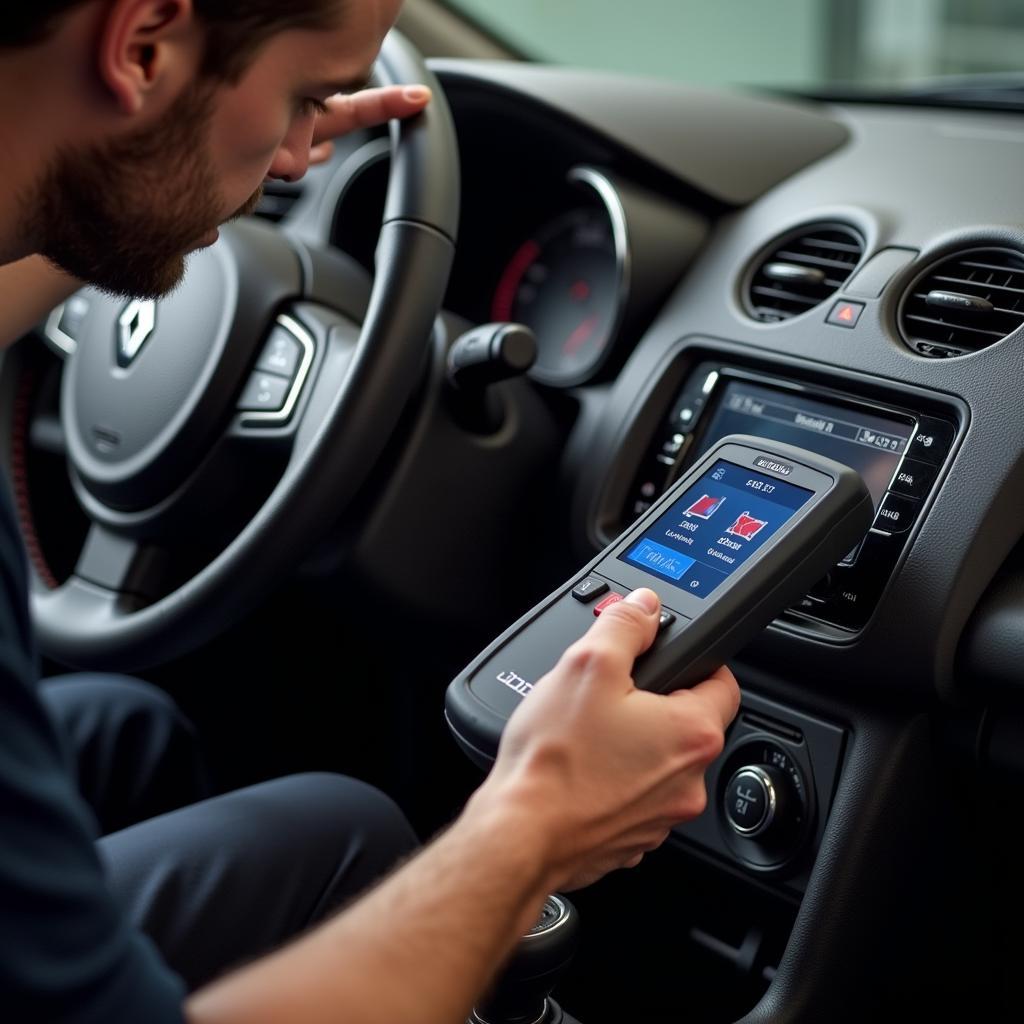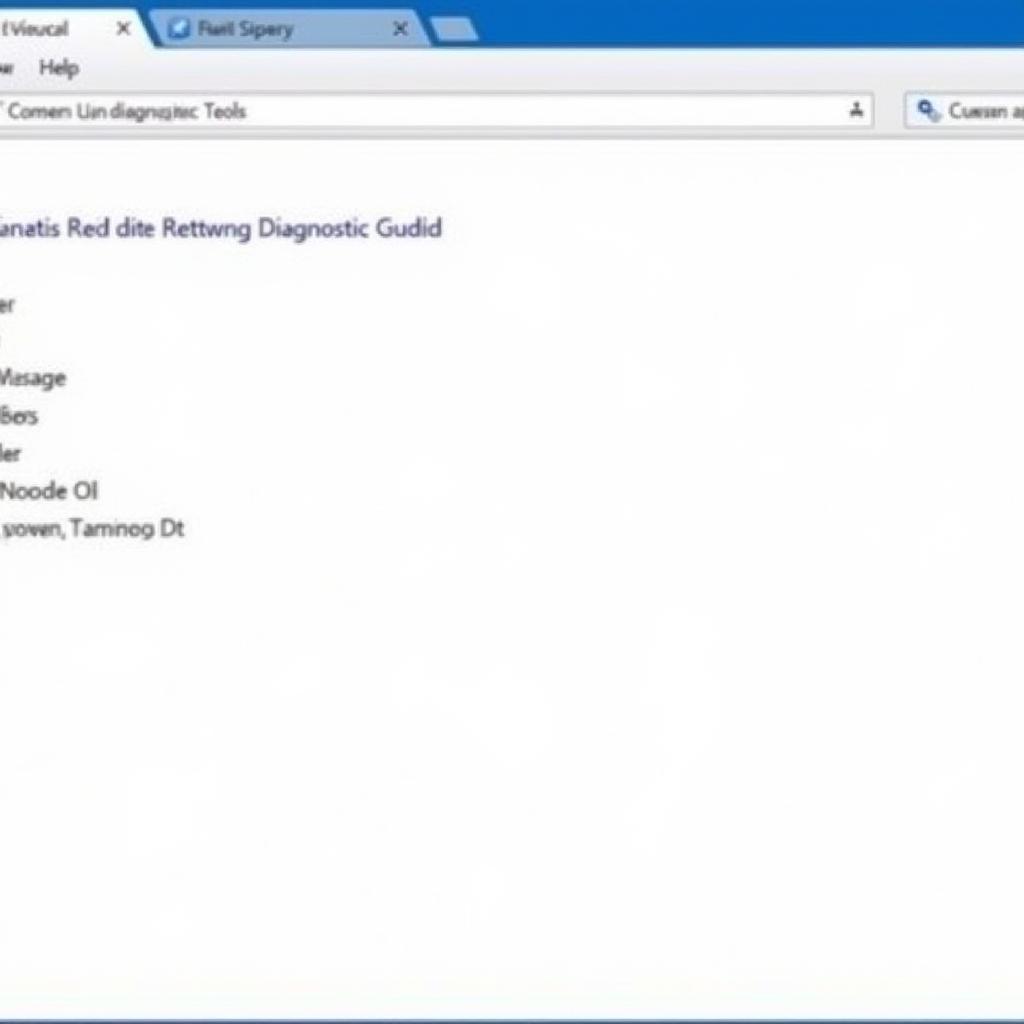Owning a Renault Clio is a joy, but like any vehicle, it can experience hiccups. When those issues arise, a Renault Clio Diagnostic Tool is your key to understanding and resolving the problem. Whether you’re a DIY enthusiast or a professional mechanic, this guide will explain why a diagnostic tool is essential for any Renault Clio owner.
Understanding the Importance of a Renault Clio Diagnostic Tool
Modern cars, including your Renault Clio, rely heavily on complex electronic systems. A diagnostic tool acts as a window into these systems, allowing you to:
-
Read and Clear Fault Codes: When your Clio’s “check engine” light illuminates, it’s signaling a problem. A diagnostic tool can read the specific fault code stored in the car’s computer, pinpointing the issue. Once repaired, the tool can then clear the code, turning off the warning light.
-
View Live Data Stream: Imagine being able to see your car’s engine speed, coolant temperature, and other vital signs in real time. A diagnostic tool provides this data, helping you identify performance issues and monitor sensor readings.
-
Perform Component Activations: Need to test a fuel injector or an ABS pump? A diagnostic tool allows you to activate specific components to ensure they’re functioning correctly.
 Mechanic using a Renault Clio diagnostic tool
Mechanic using a Renault Clio diagnostic tool
Choosing the Right Renault Clio Diagnostic Tool
The market offers a wide range of diagnostic tools, from basic code readers to advanced professional scanners. For most Renault Clio owners, a mid-range tool will suffice. Here’s what to look for:
-
OBD-II Compatibility: Ensure the tool is compatible with the OBD-II port found in all Renault Clios (typically located under the dashboard).
-
Renault-Specific Coverage: While generic OBD-II tools can read basic codes, opt for a tool that offers Renault-specific coverage. This ensures you can access manufacturer-specific codes and data.
-
User-Friendliness: Choose a tool with a clear interface, intuitive software, and helpful features like code definitions and troubleshooting tips.
Common Renault Clio Issues a Diagnostic Tool Can Help With
-
Engine Management Light: A diagnostic tool can pinpoint the cause, whether it’s a faulty oxygen sensor, a misfiring spark plug, or a more complex issue.
-
ABS Problems: Diagnose issues with your Clio’s anti-lock braking system, ensuring optimal safety.
-
Airbag System Faults: Identify problems with airbag sensors or control modules, a critical safety concern.
-
Transmission Issues: Troubleshoot problems with your Clio’s automatic or manual transmission, from sensor errors to solenoid malfunctions.
-
Electronic Parking Brake Malfunctions: Diagnose and resolve issues with your Clio’s electronic parking brake system.
“A quality diagnostic tool is like having an x-ray vision for your Renault Clio,” says automotive electronics expert, Jean-Pierre Dubois. “It allows you to quickly identify problems, saving you time and money on unnecessary repairs.”
Beyond Diagnostics: The Benefits of Advanced Features
Some Renault Clio diagnostic tools offer additional features that can be invaluable:
- Service Light Reset: Reset service reminder lights after completing routine maintenance.
- ECU Programming and Coding: Advanced users can utilize these functions for tasks like key programming or module replacement.
- Live Data Graphing: Visualize sensor data in graph form for easier analysis and troubleshooting.
“Having access to live data and the ability to graph it transformed the way I work on Renault Clios,” says Sarah Chen, a seasoned automotive technician. “I can quickly spot patterns and anomalies that would be difficult to identify otherwise.”
In Conclusion: A Wise Investment for Any Renault Clio Owner
A Renault Clio diagnostic tool is more than just a gadget; it’s an investment in the health and longevity of your car. By providing insight into your Clio’s electronic systems, a diagnostic tool empowers you to:
- Identify problems early, preventing costly repairs down the road.
- Save money on unnecessary garage visits by diagnosing issues yourself.
- Gain a deeper understanding of your vehicle and its operation.
Ready to take control of your Renault Clio’s health? Contact ScanToolUS today at +1 (641) 206-8880 or visit our office at 1615 S Laramie Ave, Cicero, IL 60804, USA to find the perfect diagnostic tool for your needs.
FAQs
1. Can I use any OBD-II diagnostic tool on my Renault Clio?
While any OBD-II tool can read basic engine codes, it’s recommended to use a tool specifically designed for Renault vehicles to access all available data and functions.
2. Do I need to be a mechanic to use a Renault Clio diagnostic tool?
Not at all! Many diagnostic tools are user-friendly and designed for car owners of all skill levels.
3. What is the OBD-II port and where can I find it in my Renault Clio?
The OBD-II port is a standardized connector found in most modern vehicles, including the Renault Clio. It’s typically located under the dashboard on the driver’s side.
4. Will using a diagnostic tool void my Renault Clio’s warranty?
No, using a diagnostic tool will not void your warranty. In fact, it can be helpful to diagnose issues before taking your car to the dealer.
5. Can a diagnostic tool tell me how to fix a problem?
While a diagnostic tool can identify the problem area, it doesn’t always provide step-by-step repair instructions. However, it can provide valuable information to help you research solutions or communicate effectively with a mechanic.


